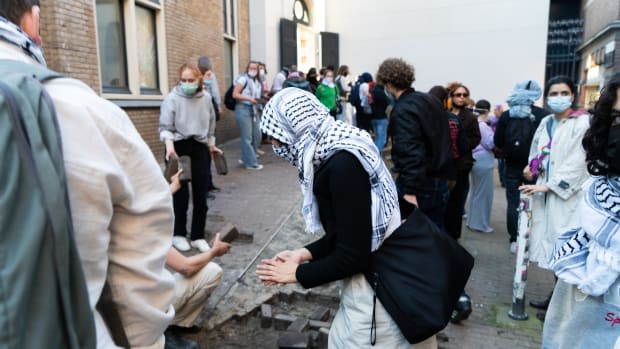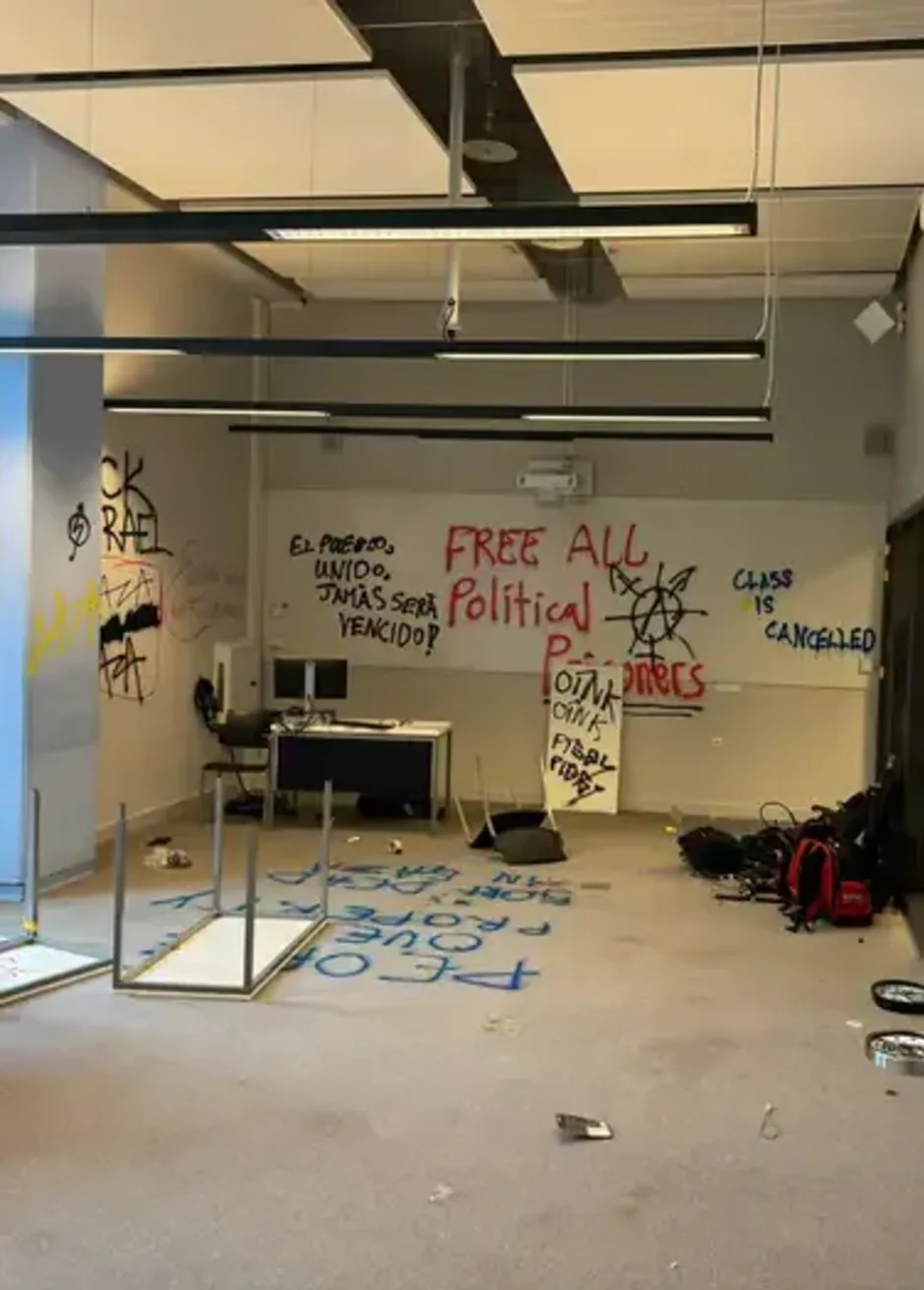
UvA won’t seek compensation from protesters for damages of May 2024 occupations
The UvA will not hold the persecuted protesters of the pro-Palestinian occupations in May last year liable for the damage suffered by the UvA. According to the UvA, this is “legally impossible.” However, the university does want to recover the damage caused by a smaller occupation in June 2024 from the protesters.
Smashed windows, destroyed coffee machines, and even broken TV screens: the pro-Palestinian occupations on Roeterseiland and Binnengasthuisterrein in May 2024 ended in devastation. Last August, the UvA expressed its desire to recover the damages from the perpetrators. Now, the university says that a lawsuit is not feasible after all. “We don’t know enough about who caused what damage,” said the UvA.
Thirteen of the fourteen protesters prosecuted for the May occupations have now appeared in court, according to the Public Prosecution Service. Eight of them have been convicted, four of whom have been sentenced to prison, mainly for violence against the police.
1.5 million euros in damage
However, the UvA says it is too difficult to prove that the protesters convicted of violence are also responsible for the damage caused during the May occupations. “It has not yet been proven that those perpetrators also caused all the damage.” In theory, the university could hold the perpetrators liable for the damage caused by the entire group. “But that is probably not legally feasible,” says the UvA.
On 6 May 2024, part of Roeterseiland was occupied, followed by the Binnengasthuisterrein on7 and 8 May, and Roeterseiland again on 13 May. In total, damage to UvA buildings amounted to almost 1.5 million euros. Added to this were the costs of the delay in the construction of the new University Library: 2.8 million euros. On several occasions, the UvA stated that it would claim damages from the protesters. The UvA was ultimately compensated for most of the damage by its insurer.

Occupation of REC-B
The university does want to recover the damage caused by a small pro-Palestinian occupation on 21 june last year from the protesters involved in that protest. During the occupation of two rooms in REC-B, around 20 protesters destroyed computers, clocks, and chairs, among other things. They also sprayed graffiti on all the walls. Thirteen people were arrested when the police cleared the building.
The UvA will seek legal advice to hold those protesters liable. “The damage was concentrated in a smaller area and was carried out by a small number of protesters,” says a spokesperson of the UvA. “This increases the likelihood that the small number of protesters can be held responsible.” It is therefore mainly the increased chance of compensation that has prompted the UvA to decide to take legal action against the arrested protesters. It is not yet known when the court cases will take place and who exactly will be prosecuted.

